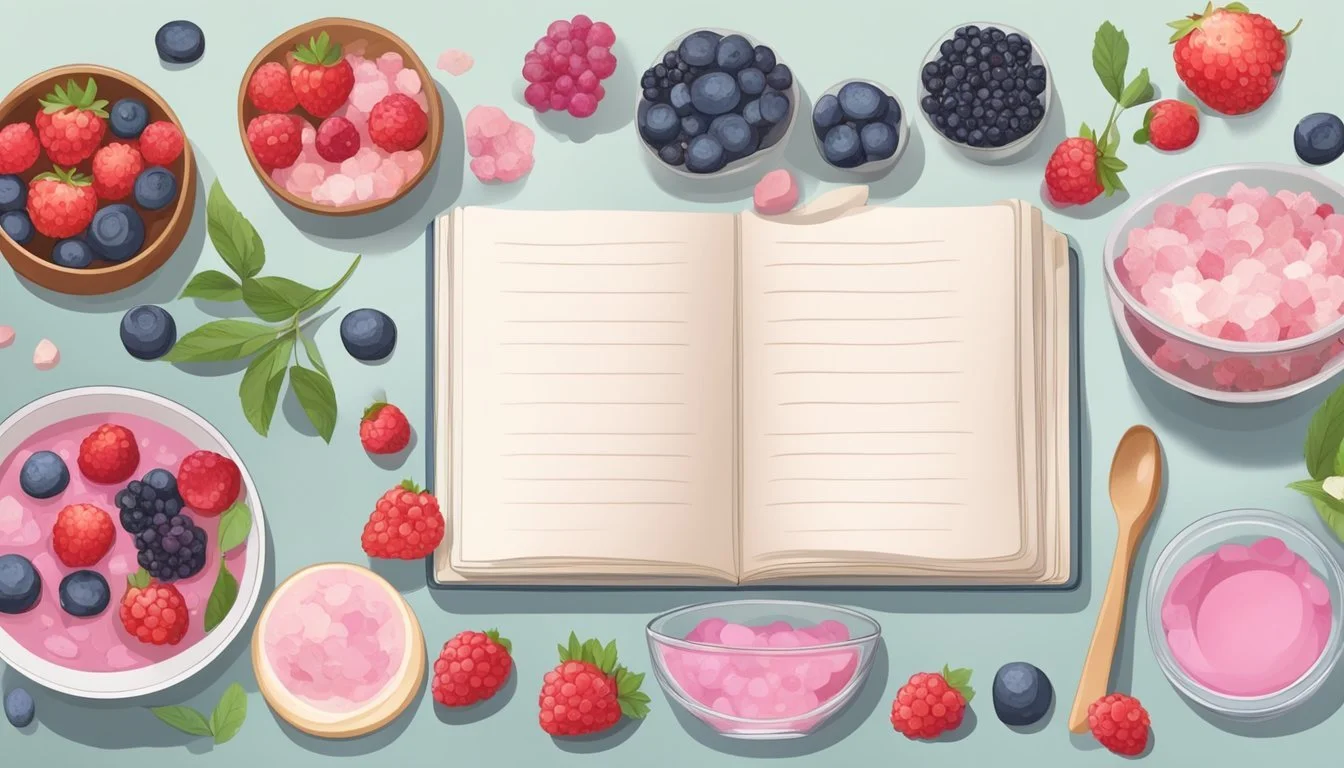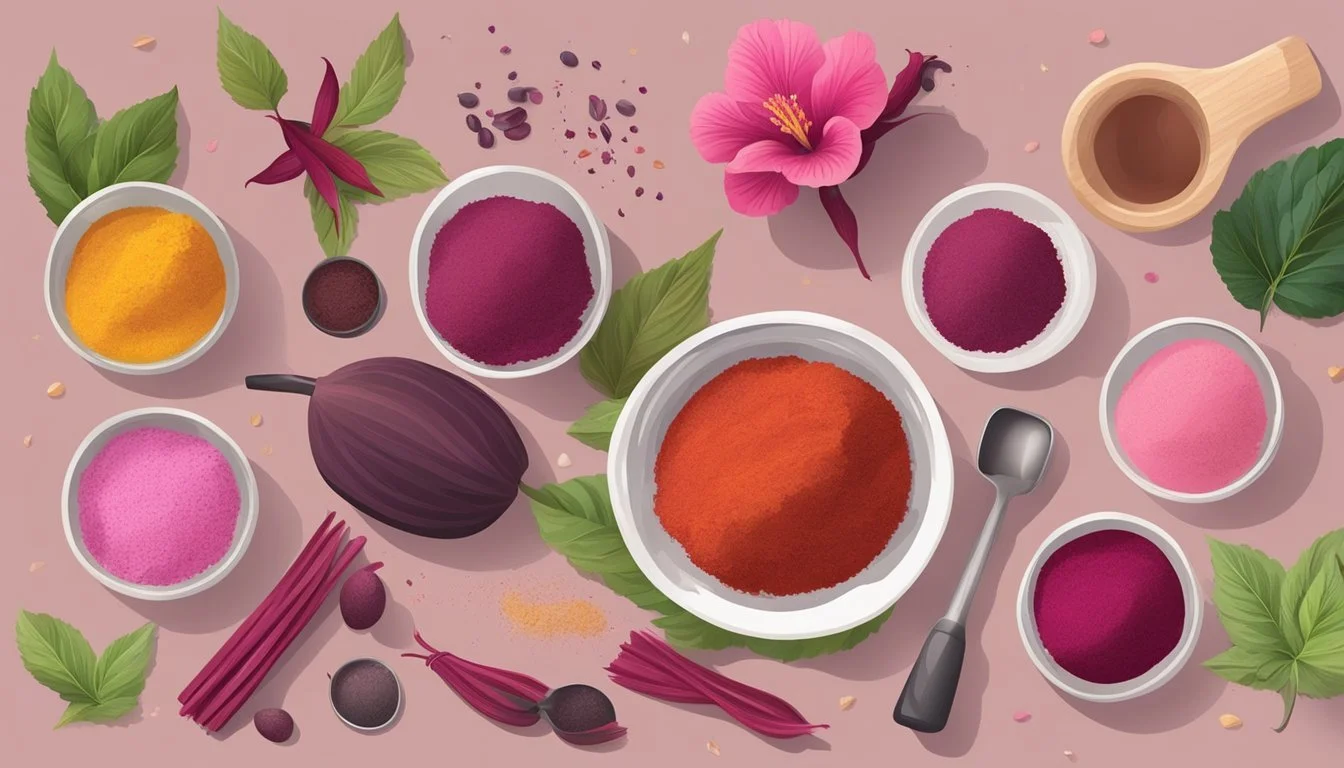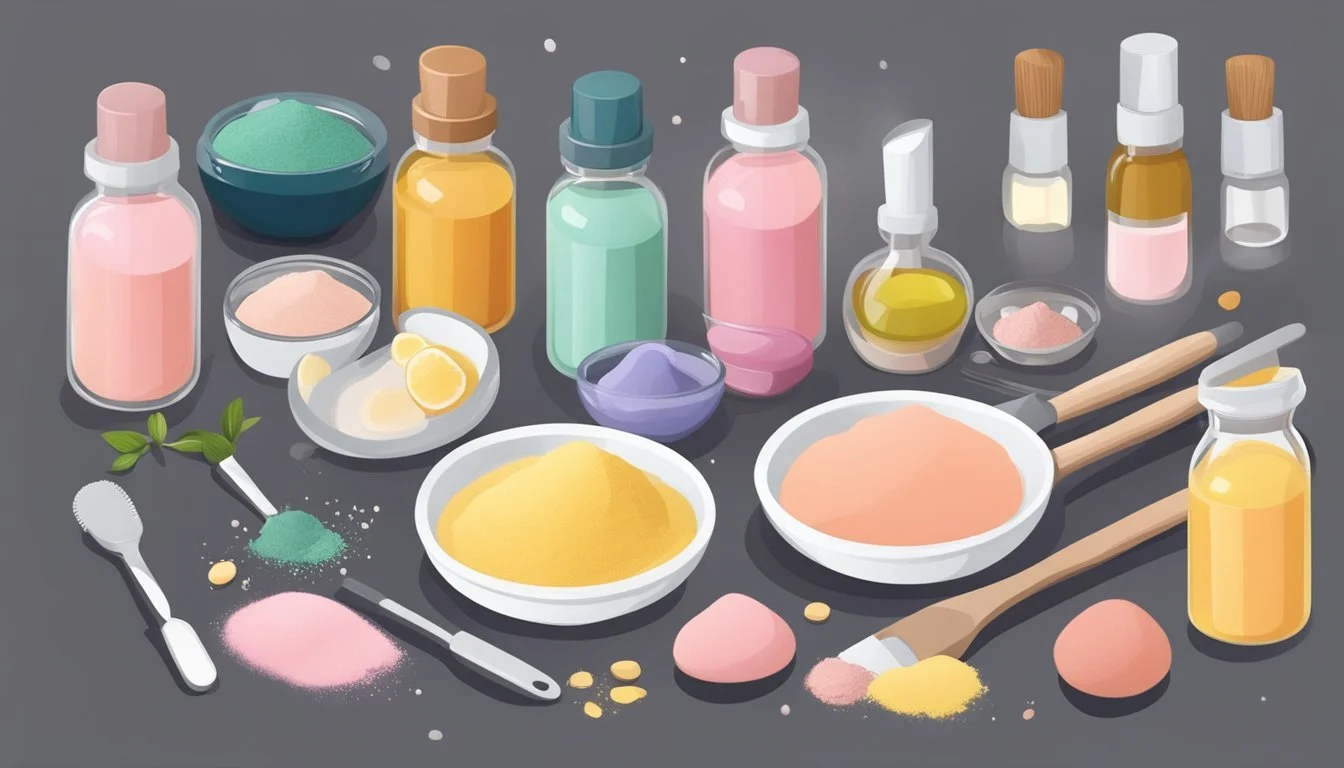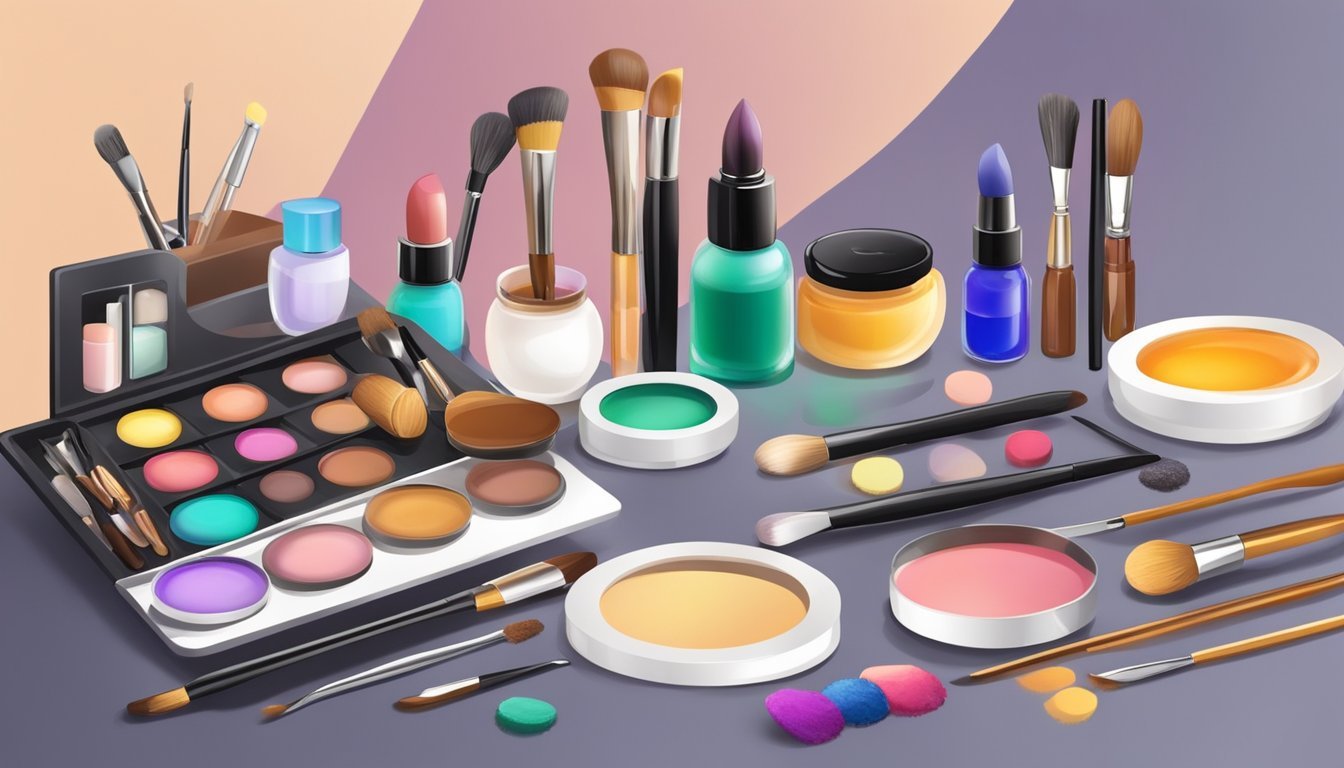DIY Blush: Easy Steps to Create Your Perfect Shade
Discover > Natural Health > DIY Blush: Easy Steps to Create Your Perfect Shade
DIY blush has gained popularity in recent years as more and more people are turning towards natural, chemical-free makeup options. Making your own blush not only allows you to control the ingredients but also provides an opportunity to customize the shade to best suit your skin tone and type. Homemade blush recipes often make use of natural ingredients like cocoa powder, beet root powder, and arrowroot powder (how long does arrowroot powder last?), which provide a variety of beautiful shades without the addition of potentially harmful chemicals found in many store-bought cosmetics.
Creating your own DIY blush can be an exciting and rewarding process, as it allows you to experiment with different combinations of natural pigments to achieve the perfect shade. Depending on your preference, you can choose to create either a loose powder blush or a cream blush. Powdered blushes commonly use a base of arrowroot or cornstarch (how long does cornstarch last?), combined with natural colorants such as beetroot powder, hibiscus powder, (how long does hibiscus powder last?) or cocoa powder. Cream blushes, on the other hand, may incorporate ingredients like shea butter or tinted lip balm to create a smooth and hydrating formula.
To make your own blush at home, you'll need a few basic tools and supplies such as a coffee grinder to finely mix the powdered ingredients, makeup brush for application, and an airtight container to store your homemade creation. With a little practice and experimentation, you can create a range of blush shades that will not only add a touch of color to your face but also provide skin care benefits, thanks to the natural ingredients in your DIY beauty recipes.
Understanding Blush and Its Impact on Skin Tone
Assessing Skin Undertones for Blush Selection
Selecting the right blush shade is crucial in enhancing one's natural beauty and complementing one's skin tone. Determine your skin undertone - warm, cool, or neutral. Here is a brief overview:
Warm undertones: Yellow or golden shades; earthy tones such as oranges, golds, and peaches work best.
Cool undertones: Pink, red, or blue shades; favor pinks, roses, and purples.
Neutral undertones: A mix of both warm and cool shades; a variety of blush shades may suit.
For DIY blush recipes, consider these natural pigments and their suitability for different skin tones:
Fair skin: Light pinks, peaches (e.g., ground flower petal powder, hibiscus flower powder)
Medium skin: Pinks, corals, golden tones (e.g., beetroot powder, pomegranate powder(how long does pomegranate powder last?)
Olive skin: Warm pinks, apricots (e.g., cocoa powder, sweet potato powder)
Dark skin: Plums, deep oranges, and bronzes (e.g., pumpkin powder, cinnamon, turmeric)
The Role of Antioxidants in Skin Care
Good skincare is essential for promoting a healthy glow and wearing blush with confidence. Antioxidants play a vital role as they combat free radicals, reduce inflammation, and prevent skin damage.
Many natural ingredients used in DIY blushes contain antioxidants, offering added benefits for skin health:
Cocoa powder: Rich in polyphenols, helps protect skin and improve collagen production.
Hibiscus powder: Contains vitamin C and anthocyanins, contributes to skin elasticity and evens skin tone.
Beetroot powder: Packed with betanin, an antioxidant that supports skin health and protection.
To create a DIY blush, grind selected ingredients with a coffee grinder until they reach a soft, flour-like texture. Mix the desired natural pigments with arrowroot powder (how long does arrowroot powder last?) as a base and a touch of mica powder for shimmer, if preferred. Store the resulting loose powder blush in an airtight container, and use a blush brush to apply gently on the cheeks. For cream blushes, mix the colored powder with shea butter and blend with a makeup brush or fingertips.
By understanding one's skin tone and opting for blushes with antioxidant-rich ingredients, a stunning and healthy glow can be achieved with DIY blush.
Natural Ingredients for DIY Blush
Common Ingredients and Their Benefits
When creating a DIY blush, it is important to use natural ingredients that have beneficial properties for the skin. Some common ingredients include:
Beetroot powder: Provides a beautiful shade of pink and is rich in antioxidants, promoting healthy skin.
Cocoa powder: Adds a warm, brown hue and also contains antioxidants that can enhance skin health.
Hibiscus powder: Offers a range of red and pink tones and is known for its skin-soothing properties.
Arrowroot powder: Often used as a base for loose powder blushes, it helps absorb excess oil and can give the final product a silky texture.
Mica: A mineral-based ingredient that adds shimmer and shine to blushes; available in various colors.
These natural pigments can be combined in different ways to create various shades that complement different skin tones and types.
Selecting Ingredients for Different Blush Types
There are two primary types of homemade blushes: powder blush and cream blush. The choice of ingredients depends on the desired blush type and the individual's skin type.
For loose powder blush:
Start with a base of arrowroot powder.
Add natural pigments like beetroot powder, cocoa powder, or hibiscus powder to achieve the desired color.
Add a touch of mica powder for shimmer.
Combine the dry ingredients in a coffee grinder for a fine, even texture. Store the finished product in an airtight container and apply with a blush brush.
For cream blush:
Melt shea butter as a moisturizing base.
Add essential oils like vitamin E for additional skin care benefits.
Combine with cocoa powder, beetroot powder, or hibiscus powder for color.
Include mica for added shimmer, if desired.
Blend the ingredients until smooth and store in a glass jar or airtight container. Apply using a makeup brush or fingertips.
By carefully selecting natural ingredients for your DIY blush, you can create a product that is both beautiful and beneficial for your skin. Experiment with different ingredient combinations and ratios to find the perfect shade and blush type for your unique needs.
Creating Your Own Blush at Home
Step-by-Step Process for Powder Blush
Choose your base and colorants: Commonly used base powders include arrowroot powder or cornstarch. For colorants, consider natural pigments such as beetroot powder, cocoa powder, or hibiscus powder. For added shimmer, opt for mica powder.
Grind the ingredients: Use a coffee grinder to achieve a fine, uniform texture.
Mix the powders: Start with a base of 1 tablespoon arrowroot powder. Gradually add your chosen colorants, testing the shade on your skin as you mix. Adjust the color according to your skin tone and desired shade.
Store your blush: Transfer the blush powder into an airtight container, and it's ready to use! Apply it using a blush brush and blend well.
Here's a simple powder blush recipe:
Arrowroot powder:
Quantity: 1 tablespoon
Beetroot powder:
Quantity: 1 teaspoon
Cocoa powder (optional):
Quantity: 1/4 teaspoon
Mica powder (optional):
Quantity: 1/8 teaspoon
How to Create Creamy Blush
Prepare your ingredients: In addition to your chosen colored powders and base, you will need shea butter, aloe gel, jojoba oil, and emulsifying wax.
Create a base mixture: Using a double boiler, melt 1 teaspoon of shea butter and 1/4 teaspoon of emulsifying wax together. Once both ingredients are melted, remove from heat and let cool slightly.
Mix in other ingredients: Add 1 tablespoon of aloe gel, 1 teaspoon of jojoba oil, and your pre-prepared colored powder (refer to the powder blush process), stirring the mixture using a whisk.
Set the cream blush: Pour the mixture into a clean container and let it cool and set before use.
Here's a simple cream blush recipe:
Shea butter (portion):
Quantity: 1 teaspoon
Emulsifying wax (portion):
Quantity: 1/4 teaspoon
Aloe gel:
Quantity: 1 tablespoon
Jojoba oil:
Quantity: 1 teaspoon
Colored powder (from Step 1):
Quantity: As prepared earlier
Keep in mind that skin tone and skin type play a role in determining the best shade and type of blush for an individual. Powder blushes work well for those with oily skin, while cream blushes provide extra moisture for those with dry skin. By creating your own DIY blush, you have the advantage of customizing the product to suit both your skin tone and skin type. Plus, you are in control of the ingredients used, which can benefit those concerned about chemicals found in commercial cosmetics.
Customizing Your DIY Blush
When creating a homemade blush, it's essential to customize the shade and scent to suit your personal preferences. Luckily, DIY blush recipes offer a range of adaptable components to help create the perfect product for your skin tone and type.
Adjusting Pigment Shades for Personal Preference
Experimenting with different natural pigments allows for a plethora of shade options. A few popular natural powders to mix and match include:
Beetroot powder: Provides a pinkish hue
Hibiscus powder: Offers a subtle rosy tint
Cocoa powder: Adds depth and warmth for a more bronzed effect
Arrowroot powder: Serves as a base for your blush to ensure smooth texture
Here's a simple guideline for customizing the color of your DIY blush:
Skin Tone: Fair
Beetroot Powder: 1 tsp
Hibiscus Powder: 1/2 tsp
Cocoa Powder: 1/4 tsp
Arrowroot Powder: 1 tbsp
Skin Tone: Medium
Beetroot Powder: 2 tsp
Hibiscus Powder: 1 tsp
Cocoa Powder: 1/2 tsp
Arrowroot Powder: 1 tbsp
Skin Tone: Dark
Beetroot Powder: 3 tsp
Hibiscus Powder: 2 tsp
Cocoa Powder: 1 tsp
Arrowroot Powder: 1 tbsp
Note: Adjust the proportions as necessary to achieve your desired shade.
To create a more golden tone, consider adding a small amount of mica powder, bronze mica, or even turmeric to the mixture. To darken the shade even further, feel free to increase the proportion of cocoa powder.
Incorporating Fragrance with Essential Oils
Adding a few drops of essential oil to your homemade blush not only offers a pleasant scent but also provides benefits for your skin. Lavender essential oil is known for its soothing and calming properties, while frankincense essential oil can help improve your skin's elasticity. A few additional essential oils to consider include:
Rose: For a delicate, floral scent
Ylang Ylang: To induce relaxation and alleviate stress
Sweet Orange: For an uplifting and refreshing aroma
When blending essential oils into your blush, be mindful to avoid irritation by using skin-safe concentrations and conducting a patch test before applying the product to your face.
Creating your DIY blush opens up a realm of possibilities in achieving the perfect shade and aroma tailored to your personal preferences. By customizing pigments and incorporating essential oils of your choice, you can create a unique makeup product to complement your natural beauty.
Storing and Applying Homemade Blush
Best Practices for Blush Storage
For homemade blushes, it's important to store them in an airtight container to maintain their freshness and quality. Whether it's a loose powder or cream blush, choose a small container that can keep out air, dust, and moisture. Here are a few tips for storing an array of blush types:
Loose powder blushes: Store in small jars or sifting containers to avoid spilling. Ensure the container has a tight lid.
Cream blushes: Keep in small, shallow containers or jars with twist lids to maintain their moisture levels.
Make sure to store both types in a cool, dry place, away from direct sunlight, to help extend their staying power.
Application Techniques for a Natural Look
Applying homemade blush isn't much different than using store-bought blush. The key lies in choosing the right technique and tool for your desired outcome. Here are some tips for applying different types of homemade blush:
Loose powder blush: Use a blush brush to pick up a small amount of the product. Tap off the excess and gently sweep it onto the apples of the cheeks, moving toward the cheekbones.
Cream blush: Apply the product to the apples of your cheeks using either your fingertips or a blending sponge. Blend it in with a tapping motion, creating a seamless, natural flush.
Customizing shades: When making your blush, feel free to experiment and combine ingredients such as beetroot powder, cocoa powder, and arrowroot powder to create the perfect shade for your skin tone and type.
Arrowroot Powder:
Purpose: Controls excess oil and provides a silky texture
Beetroot Powder:
Purpose: Adds pigment and natural color
Cocoa Powder:
Purpose: Provides additional shades and depth
Remember to always start with a small amount and build up the intensity of the color as needed. Additionally, ensure that your skin is clean and prepped with moisturizer or liquid foundation before applying homemade blush for a seamless application.
Whether you're a fan of natural makeup or simply want to avoid harsh chemicals found in some commercial cosmetics, homemade blush recipes can provide a beautiful, customizable option. With proper storage and application techniques, you too can enjoy a confident, knowledgeable, and naturally radiant look.
Advanced Tips and Variations
Experimenting with Unique Ingredients and Colors
When creating your own natural DIY blush, feel free to experiment with various ingredients and colors to achieve the perfect shade for your skin tone. Some common powders used in blush recipes include:
Arrowroot powder: This serves as a lightweight base and helps to control excess oil and moisture.
Beet root powder: For pink or reddish blushes.
Hibiscus powder: Another option for pink or red blushes, adding a vibrant touch of color.
Cacao powder: For making brown blushes and bronzers.
Cinnamon powder: Another option for brown blushes and bronzers.
Ground turmeric: Add a golden glow to your blush.
For unique variations, consider incorporating other natural powders into your recipe, such as ginger, pomegranate, sweet potato, or ground flower petal powders. These ingredients can create beautiful shades of blush while providing additional skin benefits.
Making Blush for Gifts and Personal Use
Homemade blushes make thoughtful and unique gifts. Start by customizing your handmade product to suit the recipient's skin type and preferences. Here are a few ways to personalize your DIY blush:
Choose the appropriate base: Use arrowroot powder for a smooth, silky texture that works well on all skin types. Alternatively, opt for mineral blush recipes if your recipient has dry skin.
Customize the shade: Experiment with varying amounts of colored powders, such as beetroot, hibiscus, cacao, or mica powders, to achieve the desired blush color.
Adjust the intensity: For a more pigmented blush, add more colored powder. For a sheer finish, incorporate more arrowroot or another lightweight base.
Once you have perfected your blush recipe, store it in an airtight container and include a high-quality makeup brush for application. Don't forget to include a personalized label or tag, explaining that it's a handmade, all-natural product free of dangerous chemicals found in conventional cosmetics.
In addition to making blush as gifts, you can also create your own cream blush for personal use. To do this, combine shea butter or another natural moisturizer with your blush powder. Adjust the ratio to achieve the desired consistency and pigmentation. Finally, store your DIY cream blush in a glass jar or another airtight container.
With these advanced tips and variations, you can confidently create customized, all-natural blushes for yourself and your loved ones. Enjoy the process of experimenting with unique ingredients and colors to achieve beautiful, healthy, and personalized makeup for every skin type and tone.







